Universitat Politècnica de Catalunya
Type of resources
Topics
Keywords
Contact for the resource
Provided by
Years
Formats
Representation types
Update frequencies
-
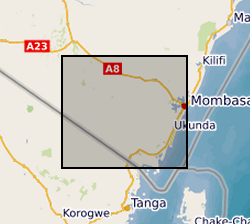
Results of microbial water quality conducted in Kwale County, Kenya from 2015 to 2017 by University of Oxford and Universitat Politecnica de Catalunya as part of the Gro for GooD project (https://upgro.org/consortium/gro-for-good/). Water samples from 101 locations (including 31 open wells, 27 deep boreholes, 21 shallow boreholes with handpumps, 15 covered dug wells with handpumps, and 10 surface water sites. This data set contains results for microbial risk parameters including Escherichia coli, thermotolerant coliforms (TTCs) and tryptophan-like fluorescence (TLF). Most samples also have accompanying data on pH, conductivity, water temperature and turbidity. Duplicate and replicate samples are included and indicated by 'Dup' or 'Rep'. Duplicates samples were collected from the same water points within minutes of each other and laboratory replicates were different aliquots from a single sample. Risk classifications of E. coli and TTC data are based on the World Health Organisation's microbial water quality risk grading scheme. Manufacturer recommended sampling protocols were used. The sampled water points were in regular use and boreholes were flushed with either an electric pump or hand-pumping prior to sample collection. Samples from the open wells were drawn with buckets and rope, which were designated for each site and were rinsed prior to sampling to minimise secondary contamination. Daily field and laboratory blank samples were analysed to confirm no secondary contamination or cross-contamination between sites. For the tryptophan-like fluorescence (TLF) measurement, approximately three litres of unfiltered water were pumped or poured into a stainless-steel container (kept in a black box to prevent ambient light from interfering). The container was cleaned with ethanol and triple-rinsed with sample water prior to each measurement. Measurement was conducted for approximately 3 minutes and the median result was used. The probe and its sensor window were kept clean. Air bubble formation on the sensor window was avoided. For the bacteria sampling, sterile purpose-made bags were used for sample collection and immediately stored in a cooler box with ice-packs. They were transported and processed to begin incubation within two to five hours. Gro for GooD: Groundwater Risk Management for Growth and Development
-
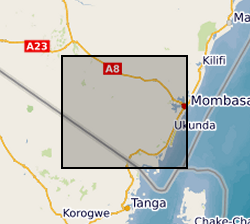
Results of two sampling campaigns conducted in Kwale County Kenya in March and June 2016 by GHS/UPC as part of the Gro for GooD project. Water samples from over 79 groundwater and 6 surface water (SW) locations were analysed for major ions, stable isotopes, selected trace constituents, electrical conductivity, nitrates, ammonia, pH, DO (Dissolved Oxygen), Eh (oxidation / reduction potential), Temperature, TOC (Total Organic Carbon) and field alkalinity. Most locations were sampled in both March (dry season) and June (wet season). Geology at each location recorded as follows: P - Pliocene Sands, Pls - Pleistocene Sands, Plc - Pleistocene corals. Reference: First step to understand the importance of new deep aquifer pumping regime in groundwater system in a developing country, Kwale, Kenya; Ferrer et al, Geophysical Research Abstracts, Vol. 18, EGU2016-16969, 2016; http://meetingorganizer.copernicus.org/EGU2016/EGU2016-16969.pdf; https://upgro.files.wordpress.com/2015/09/egu16_groforgood_v1.pdf UPC - The Departement of Civil Enginyering de la Universitat Politecnica de Catalunya GHS - Grupo de Hidrologia Subterranea
-
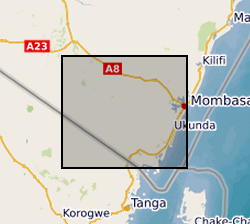
The download .rar file contains a groundwater model of the coastal aquifer in Kwale County, Kenya (ModelMuse Text File) produced by Dr Nuria Ferrer and Dr Albert Folch at the Universitat Politècnica de Catalunya. The model can be used to explore future climate and groundwater abstraction scenarios to provide management recommendations. The download does not include proprietary abstraction data from industry project partners, thus running the model provided here will not reproduce published research findings. The file named”np67IH.bhd” are the initial heads file required to run the model.
-
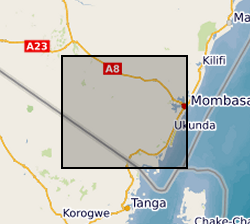
The data sets contain the monthly rainfall volume from manual rain gauge stations spread across the study area. There are 11 rainfall stations. The rain unit is mm. In addition, the dataset contains the chloride concentration in mg/l of the rainfall, for each month. Blank data (-) means data not available due to not enough rain volume, no rainfall or problems when transporting the samples from Kenya to Barcelona. The data available is only from April 2016 to November 2017. This data is useful to calculate the recharge volume by chloride mass balance (CMB) methodology. https://www.hydrol-earth-syst-sci-discuss.net/11/307/2014/hessd-11-307-2014-print.pdf
-
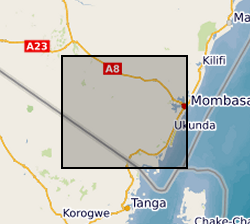
The file contain groundwater level/depth (WL), Groundwater and Surface Water Quality data (EC (micro-siemens per centimetre or µS/cm), Temperature (°C) and pH) for 49 points under fortnightly monitoring relevant to Gro for GooD research project in Kwale County, Kenya. Blank - Data not available. Gro for GooD: Groundwater Risk Management for Growth and Development
-
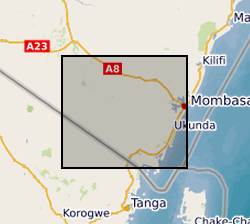
The data sets contain the daily record of meters of groundwater columns for 7 Heron logger transducers installed in different boreholes and wells in the study area. Missing data denoted -9999. The Barlog data for atmospheric pressure (Atmospheric Pressure data measured by Heron Barologger for the period of April 2014 to November 2018 at Munje Jabalini.) is also included. "Uncomp.HT.WTR. Above Transducer" corresponds to the actual pressure the dipperLog is measuring. "Barologger Data" corresponds to the Barlog data for atmospheric pressure at Munje Jabalini "Comp.Depth.WTR Below the Datum" is the "Depth below datum" entered in the logger setup less "Comp.HT.WTR. Above Transducer". The data was collected by Albert Folch and Nuria Ferrer (UPC), Mike Lane and Calvince Wara (Rural Focus Ltd). The PI on the Gro for GooD project was Prof. Rob Hope, University of Oxford.
 BGS Data Catalogue
BGS Data Catalogue